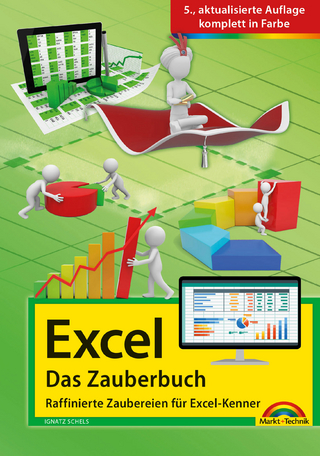
Microsoft Excel 2013 Building Data Models with PowerPivot
Microsoft Press,U.S. (Verlag)
978-0-7356-7634-3 (ISBN)
Your guide to quickly turn data into results.
Transform your skills, data, and business—and create your own BI solutions using software you already know and love: Microsoft Excel. Two business intelligence (BI) experts take you inside PowerPivot functionality for Excel 2013, with a focus on real world scenarios, problem-solving, and data modeling. You'll learn how to quickly turn mass quantities of data into meaningful information and on-the-job results—no programming required!
Understand the differences between PowerPivot for Self Service BI and SQL Server Analysis Services for Corporate BI
Extend your existing data-analysis skills to create your own BI solutions
Quickly manipulate large data sets, often in millions of rows
Perform simple-to-sophisticated calculations and what-if analysis
Create complex reporting systems with data modeling and Data Analysis Expressions
Share your results effortlessly across your organization using Microsoft SharePoint
Authors’ note on using Microsoft Excel 2016: This book’s content was written against Excel 2013, but it is useful and valid for users of Excel 2016 too. Excel 2016 introduces several new DAX functions and an improved editor for DAX without changing any existing behavior. In other words, all of the concepts and examples explained in this book continue to work with Excel 2016.
Alberto Ferrari has achieved Microsoft SQL Server Analysis Services (SSAS) Maestro status and is a consultant and trainer who specializes in developing Microsoft BI solutions. He is the coauthor of Microsoft PowerPivot for Excel 2010 and Expert Cube Development with Microsoft SQL Server 2008 Analysis Services and SQLBI Methodology.
Introduction
Chapter 1: Introduction to PowerPivot
Chapter 2: Using the unique features of PowerPivot
Chapter 3: Introducing DAX
Chapter 4: Understanding data models
Chapter 5: Publishing to SharePoint
Chapter 6: Loading data
Chapter 7: Understanding evaluation contexts
Chapter 8: Understanding CALCULATE
Chapter 9: Using hierarchies
Chapter 10: Using Power View
Chapter 11: Shaping the reports
Chapter 12: Performing date calculations in DAX
Chapter 13: Using advanced DAX
Chapter 14: Using DAX as a query language
Chapter 15: Automating operations using VBA
Chapter 16: Comparing Excel and SQL Server Analysis Services
About the Authors
| Reihe/Serie | Business Skills |
|---|---|
| Verlagsort | Redmond |
| Sprache | englisch |
| Maße | 288 x 28 mm |
| Gewicht | 700 g |
| Themenwelt | Informatik ► Office Programme ► Excel |
| ISBN-10 | 0-7356-7634-8 / 0735676348 |
| ISBN-13 | 978-0-7356-7634-3 / 9780735676343 |
| Zustand | Neuware |
| Informationen gemäß Produktsicherheitsverordnung (GPSR) | |
| Haben Sie eine Frage zum Produkt? |
aus dem Bereich


